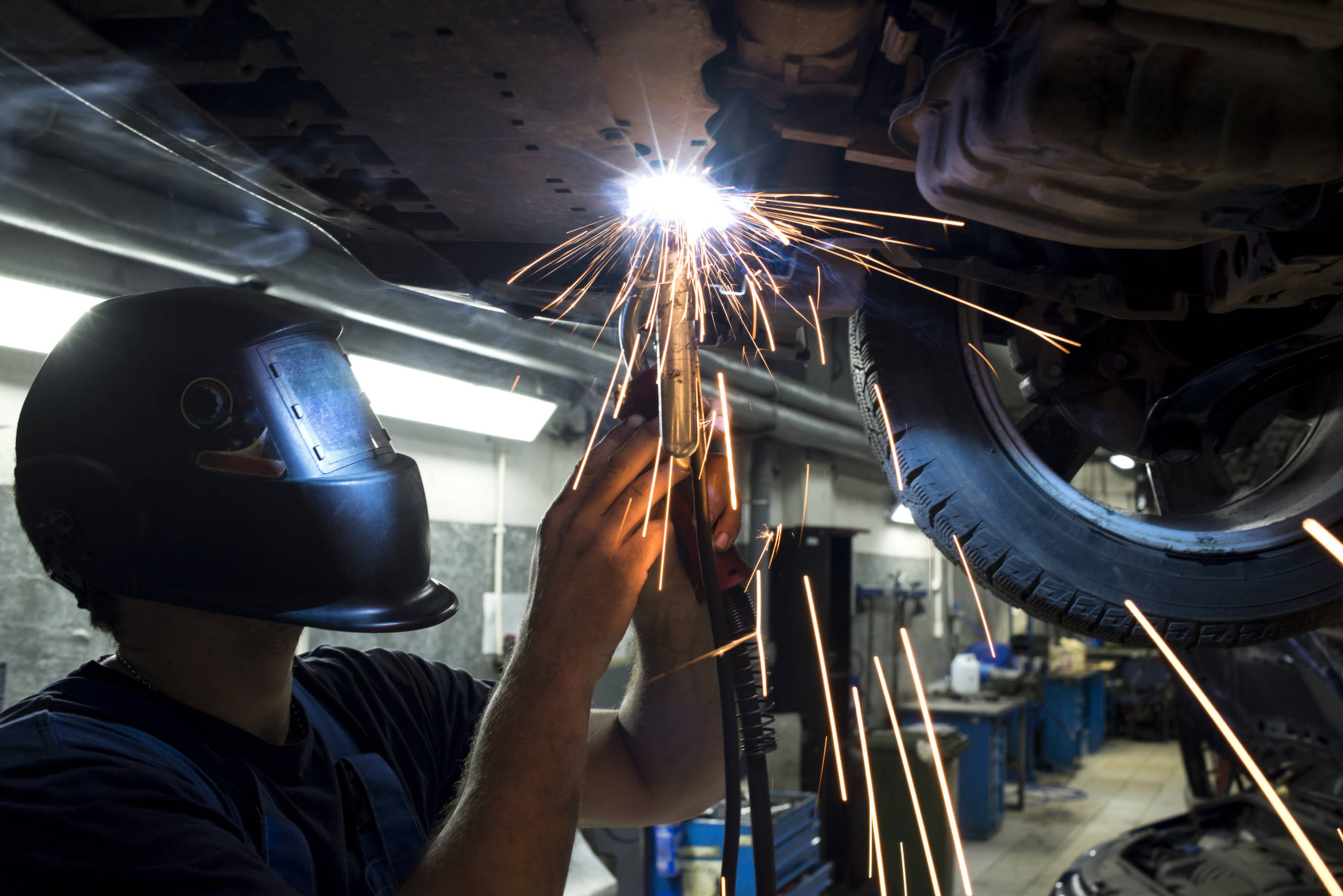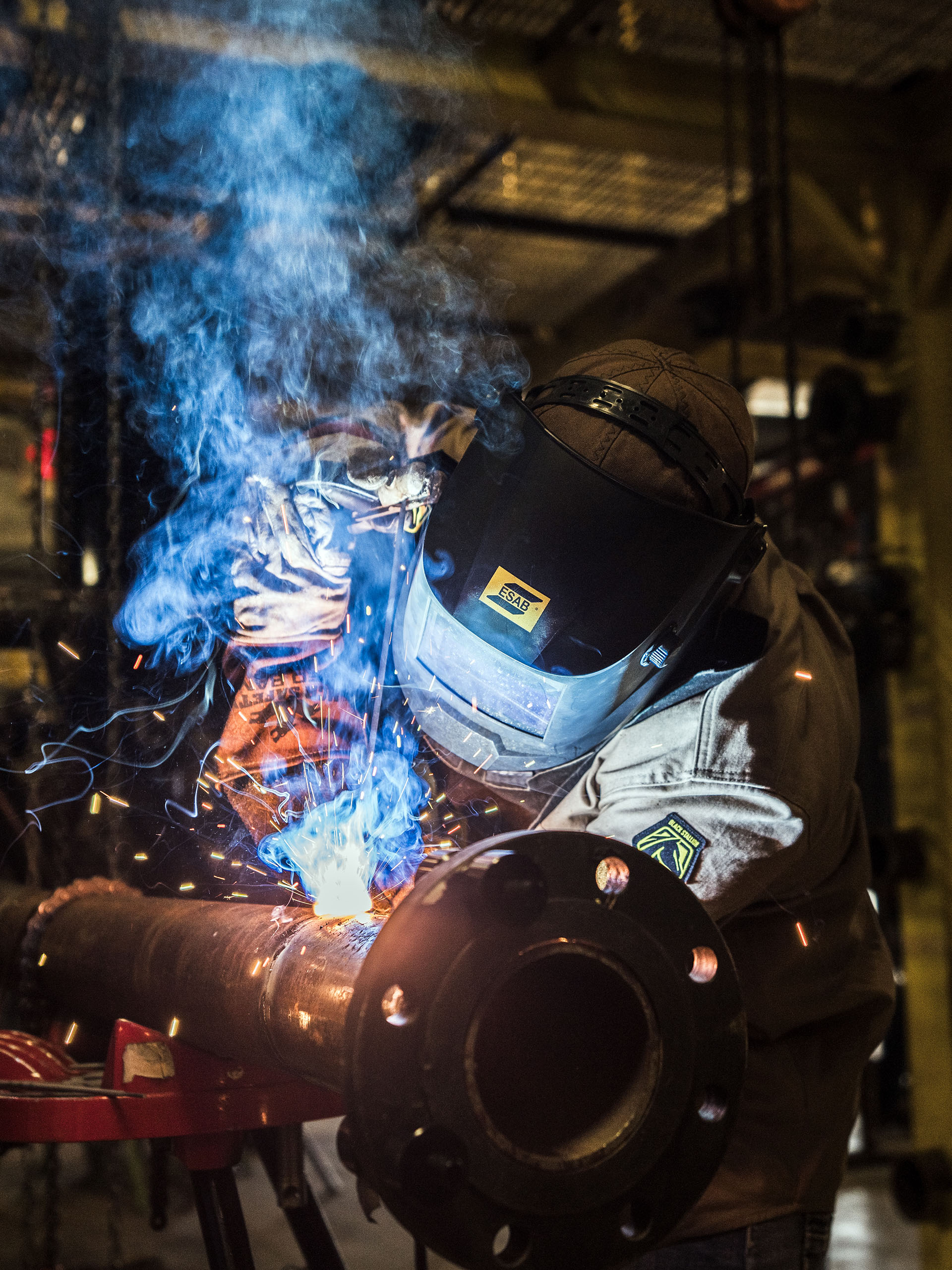Usual Welding Repair Issues and Exactly How to Address Them Efficiently
Welding repair work frequently experience a series of concerns that can endanger the honesty of the end product. Usual problems consist of poor penetration, porosity, and imbalance, amongst others. Each problem provides distinct challenges that need certain approaches for resolution. Comprehending these issues is important for welders aiming to boost their skills and outcomes. This discussion will certainly discover these common welding repair concerns and efficient methods to address them.
Insufficient Penetration
Poor infiltration occurs when the weld metal falls short to fully fuse with the base product, resulting in weak joints and possible architectural failings. This problem frequently originates from insufficient heat input, inaccurate electrode angle, or inappropriate welding rate. Welders might experience insufficient penetration due to a mistake of the required criteria for a specific material thickness or kind. In addition, contamination on the base material's surface can impede reliable bonding, worsening the issue. To attend to insufficient penetration, welders must guarantee suitable settings on their devices and maintain a tidy work surface. Routine evaluation of welds is advised to identify any kind of deficiencies early, permitting prompt modifications and the avoidance of compromised structural stability in welded assemblies.
Porosity
Porosity is an usual defect in bonded joints that manifests as little gas bubbles entraped within the weld steel. This problem can endanger the integrity of the weld, bring about lowered strength and potential failing under tension. Montana Mobile Welding and Repair Belgrade. Porosity generally occurs from contamination, dampness, or improper welding strategies, which allow gases to get away into the molten weld swimming pool. To attend to porosity, welders should assure appropriate surface area prep work, maintain a tidy functioning atmosphere, and use ideal welding specifications. In addition, picking the ideal filler product and securing gas can minimize gas entrapment. Regular examination and screening of welds can help identify porosity early, assuring prompt restorative actions are taken, thereby maintaining the top quality and reliability of the welded structure
Misalignment
Misalignment in welding can arise from different elements, including improper configuration and thermal growth. Comprehending the origin triggers is important for efficient resolution. Numerous correction methods are readily available to realign components and ensure structural honesty.
Reasons for Misalignment
Welding imbalance often originates from a selection of underlying problems that can endanger structural stability. One primary reason is inappropriate fit-up of elements prior to welding, which can bring about gaps and uneven surface areas. Variations in thermal expansion during the welding process can also lead to distortion, specifically if the materials being signed up with have various coefficients of development. In addition, poor fixturing and clamping may fail to hold elements securely in position, resulting in motion throughout welding. Poorly maintained devices, including welding devices and tools, may present inconsistencies in the weld grain, additional adding to misalignment. Driver mistake, stemming from inadequate training or experience, can likewise play a considerable duty in producing misaligned welds.

Improvement Strategies Offered
Addressing imbalance successfully needs a mix of rehabilitative strategies customized to the certain concerns handy. One common approach is making use of components or jigs to hold components in the correct placement during welding, making sure regular alignment. In addition, preheating the materials can help in reducing distortion and boost fit-up. For significant misalignment, mechanical adjustment strategies, such as utilizing hydraulic jacks or clamps, can be employed to correct the position before welding. Post-weld warm therapy may additionally be required to relieve stresses triggered by misalignment. Ultimately, cautious examination and adjustment during the configuration stage can protect against misalignment problems from ending up being substantial troubles, promoting a smoother welding procedure and enhancing overall structural integrity.
Distortion
Distortion is a typical challenge in welding that can occur from numerous factors, including uneven home heating and air conditioning. Recognizing the causes of distortion is vital for carrying out effective avoidance techniques. Resolving this problem not only improves structural honesty yet also boosts the general top quality of the weld.
Sources of Distortion
When based on the extreme warm of welding, materials frequently go through modifications that can cause distortion. This phenomenon primarily occurs from thermal development and tightening during the welding procedure. As the weld area warms up, the material increases; upon air conditioning, it gets, which can develop inner tensions. Additionally, uneven home heating across a work surface can intensify these tensions, leading to bending or bending. The sort of product additionally plays a significant duty; steels with varying thermal conductivity and coefficients of development might react in different ways, resulting in unforeseeable distortions. Moreover, bad joint layout and inadequate fixturing can add to imbalance throughout welding, boosting the probability of distortion. Comprehending these causes is vital for reliable welding repair work and prevention techniques.
Avoidance Techniques
Effective avoidance techniques for distortion throughout welding focus on regulating heat input and guaranteeing appropriate joint style. Preserving a constant heat input helps to lessen thermal expansion and tightening, which can result in distortion. Making use of techniques such as pre-heating the work surface can likewise minimize the temperature level slope, advertising uniform heating. Additionally, choosing proper joint layouts, such as T-joints or lap joints, can boost security and decrease stress focus. Implementing appropriate fixturing to protect the workpieces in position further aids in maintaining alignment during the welding procedure. Lastly, staggered welding series can distribute warm a lot more evenly, preventing localized distortion. By applying these techniques, welders can substantially reduce the chance of distortion and boost the general top quality of their welds.
Cracking
Breaking is a typical problem run into in welding fixings, commonly arising from various variables such as improper air conditioning prices, material choice, or poor joint prep work. The occurrence alumaloy of fractures can considerably compromise the stability of the weld, causing possible failures throughout operation. To address this issue, welders have to first analyze the source, guaranteeing that materials are suitable and properly selected for the certain application. Furthermore, regulating the cooling rate during the welding procedure is necessary; rapid air conditioning can induce stress and anxiety and result in splitting. Proper joint layout and prep work additionally add to reducing the threat. Executing these methods can enhance weld top quality and resilience, ultimately decreasing the likelihood of fracturing in finished weldments.
Insufficient Blend
A significant concern in welding fixings is insufficient blend, which occurs when the weld metal does not adequately bond with the base material or previous weld passes - Montana Mobile Welding and Repair Belgrade Welding. This defect can result in weak points in the joint, potentially endangering the stability of the welded structure. Elements adding to incomplete blend include insufficient heat input, incorrect welding strategy, and contamination of the surfaces being joined. To address this concern properly, welders must assure correct pre-weld cleaning and surface prep work, in addition to adjust their welding specifications to achieve sufficient infiltration and fusion. Normal assessment during the welding procedure can also assist determine insufficient fusion early, permitting for prompt corrective steps to boost the overall quality of the weld
Overheating
While welding repair services can improve structural integrity, overheating presents a substantial obstacle that can bring about material deterioration. Too much heat throughout welding can modify the mechanical buildings of steels, leading to decreased strength, increased brittleness, and warping. This phenomenon is especially important in high-stress applications where architectural integrity is extremely important. Determining getting too hot can include visual examinations go to these guys for discoloration or distortion, in addition to monitoring temperature level during the welding procedure. To reduce the threats related to overheating, welders need to employ suitable methods, such as regulating warm input, changing traveling speed, and utilizing suitable filler materials. In addition, carrying out pre- and post-weld warm treatments can aid restore product residential properties and boost the general high quality of the repair service, ensuring long-term performance and safety.
Often Asked Inquiries
What Are the Typical Signs of a Welding Problem?

Exactly How Can I Evaluate My Welds for High quality?
To check welds for quality, one can use aesthetic inspections, ultrasonic screening, and radiographic approaches. Each technique ensures structural integrity, determines defects, and validates adherence to specified criteria, inevitably boosting the dependability of the bonded joints.
What Security Precautions Should I Take While Welding?
When welding, one must focus on safety and security by wearing appropriate individual protective tools, making certain proper ventilation, securing flammable products away, maintaining a clean workspace, and understanding surroundings to protect against accidents and injuries.
Can I Repair a Weld Without Redesigning the Entire Joint?
Fixing a weld without renovating the whole joint is feasible, depending on the damage (Belgrade Fabrication). Methods such as grinding, including filler material, or making use of a welding procedure can successfully deal with specific defects while Full Article maintaining the bordering structure
What Tools Are Vital for Effective Welding Repairs?
Vital devices for reliable welding repairs include a welding device, wire brush, mill, safety gear, clamps, and filler products. Each tool plays an important duty in ensuring high quality and security during the repair service procedure. Porosity typically arises from contamination, wetness, or improper welding techniques, which permit gases to run away right into the liquified weld pool. Inadequately kept tools, consisting of welding machines and tools, may introduce disparities in the weld grain, further contributing to imbalance. When subjected to the extreme heat of welding, materials typically undertake changes that can lead to distortion. Fracturing is a typical concern run into in welding repairs, usually resulting from numerous variables such as improper air conditioning rates, product option, or poor joint preparation. A considerable problem in welding repair services is insufficient blend, which happens when the weld steel does not properly bond with the base product or previous weld passes.